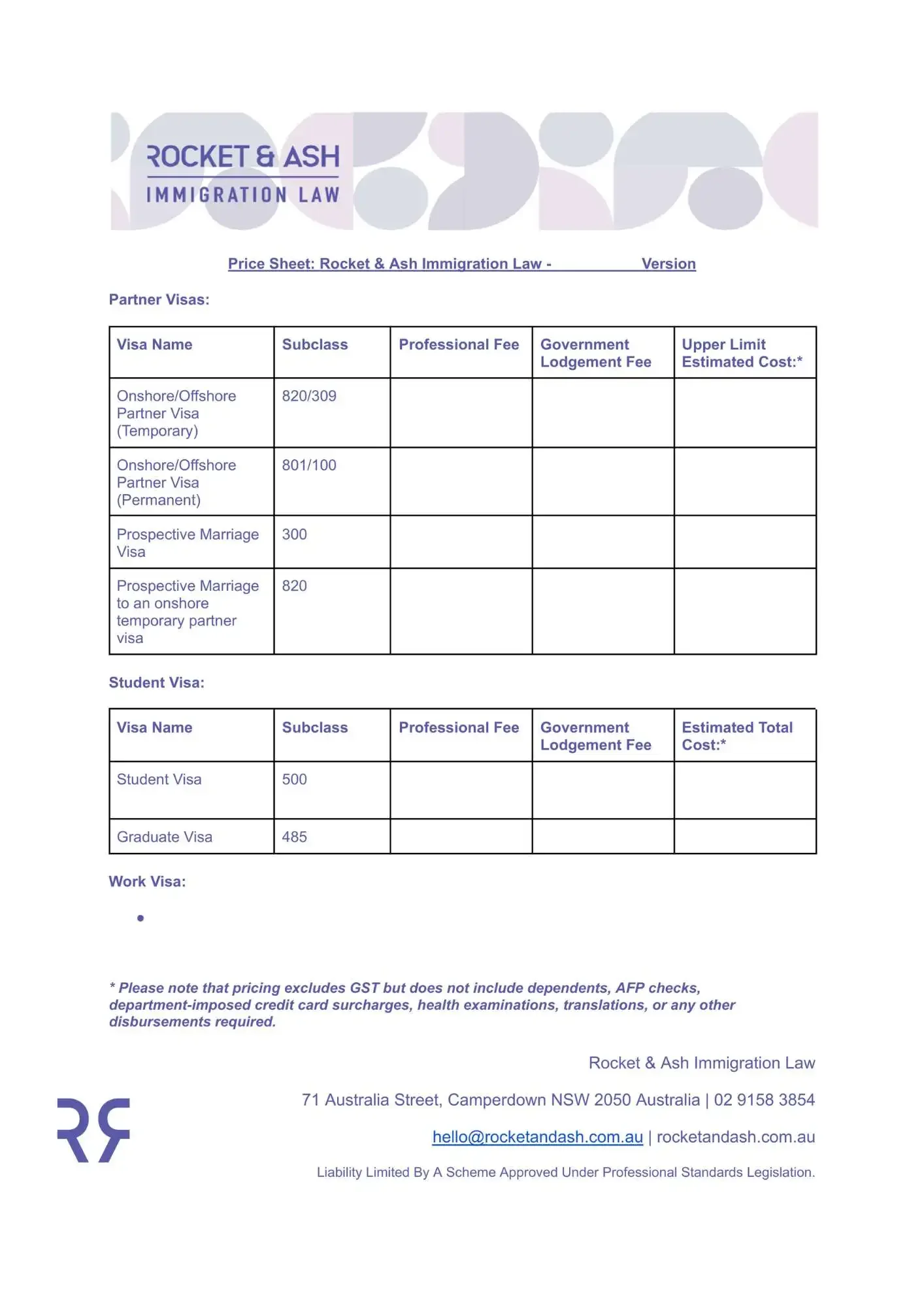In the world of Australian immigration, the journey from a temporary work visa to permanent residency can feel like navigating a maze. But if you're holding a Subclass 482 visa, there's good news: the pathway to permanent residency via the Subclass 186 visa is clearer than ever. Let's break down this transition and make it as simple as a walk in the park.
I'm Ines, the Principal Solicitor at Rocket & Ash Immigration Law. Having spent nearly 13 years dedicated exclusively to Immigration Law, I've guided countless employers in sponsoring their employees under the Subclass 482 work visa and helped over a thousand applicants with various other visa types.
What is the Subclass 482 Visa?
The Subclass 482, also known as the Temporary Skill Shortage (TSS) visa, allows Australian employers to address labour shortages by bringing in skilled workers from overseas. It's a temporary visa, but it's a stepping stone to something more permanent.
Why Consider the Subclass 186 Visa?
The Subclass 186, or the Employer Nomination Scheme (ENS) visa, is a permanent residence visa for skilled workers. It lets you live and work in Australia indefinitely. Moving from a 482 to a 186 is like upgrading from a rented apartment to owning your own home. It's a significant step that offers stability and long-term benefits.
The Pathway from 482 to 186
- Work for Your Sponsor: To start, you need to work for your sponsoring employer on your 482 visa for at least two years. This experience demonstrates your commitment and allows your employer to see your value.
- Employer Nomination: Your employer must then nominate you for the 186 visa. This nomination is crucial; think of it as your boss giving you a stellar reference that opens the door to permanent residency.
- Skills Assessment: Depending on your occupation, you might need a skills assessment. This step ensures that your skills are up to Australian standards. It's like having your credentials validated to match local expectations.
- Application Submission: Once nominated, you can apply for the 186 visa. This process involves providing evidence of your work experience, qualifications, and language proficiency. It’s a bit like submitting a comprehensive job application—detailed and precise.
- Health and Character Checks: You must meet health and character requirements.
Benefits of Transitioning to a 186 Visa
- Work Security: With a permanent visa, you have greater work security. You’re not tied to one employer, giving you the freedom to explore new opportunities.
- Family Inclusion: Your immediate family members can also be included in your 186 visa application, allowing them to enjoy the same benefits.
- Access to Benefits: Permanent residents have access to Medicare, Australia's public health system, and other social security benefits.
- Pathway to Citizenship: A 186 visa is a stepping stone to Australian citizenship. After living in Australia on a permanent visa for a one to two year period, you can apply to become an Australian citizen.
Potential Hurdles and How to Overcome Them
- Employer Support: Securing your employer's nomination can be challenging. Maintain a good relationship with your employer and demonstrate your value to the company consistently.
- Meeting Criteria: Ensure you meet all criteria, including the specific requirements for your occupation. Stay updated on any changes to immigration laws and policies.
- Upcoming changes creating a new list and three new pathways. It will be important to monitor these changes and how they may affect a potential 186 application.
My Experience and Expertise
Having helped hundreds of employers sponsor their employees under the 482 visa and guided numerous individuals through the transition to the 186 visa, I've seen firsthand the transformative impact this pathway can have.
Ready to Make the Transition?
If you’re considering this pathway, I encourage you to start preparing early. Understand the requirements, gather your documents, and build a strong case for your employer’s nomination.



